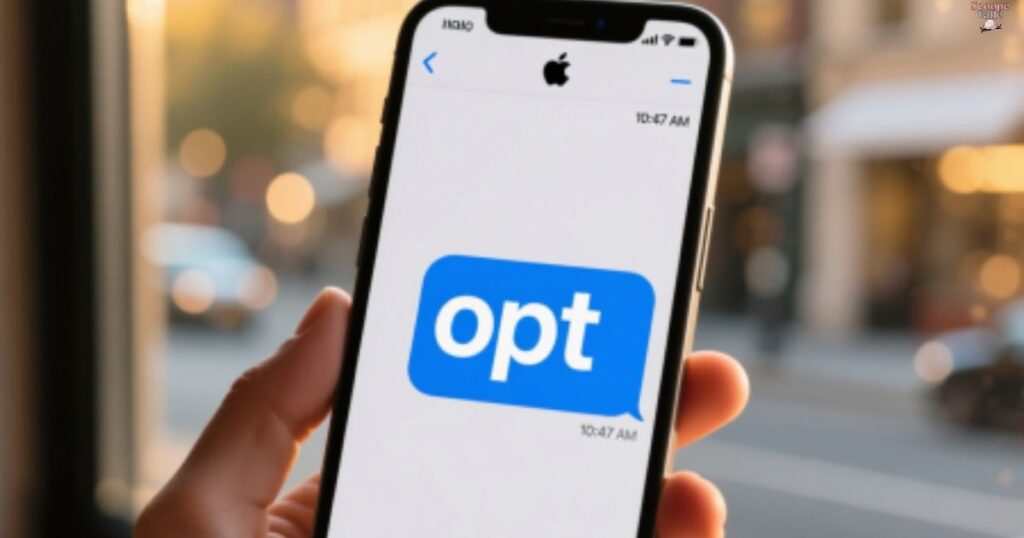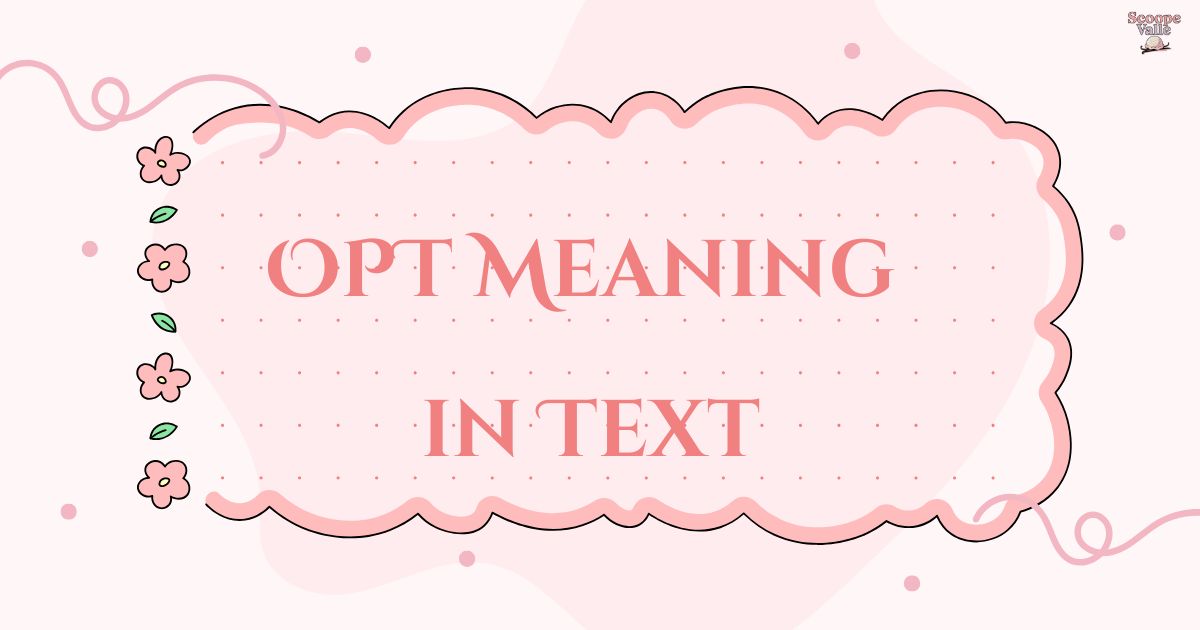In today’s fast-paced digital world, you’ve probably seen the term “OPT” pop up in emails, text messages, or even app notifications. Whether it’s about joining a subscription list or choosing preferences in a game, “OPT” is a small but powerful word that helps define your choices online. This guide will break down what “OPT” means, how it’s used in different contexts, and how to respond naturally without sounding robotic.
What Does “OPT” Mean?
“OPT” comes from the verb “to opt,” which simply means to make a choice. In digital communication, it’s often short for “opt-in” or “opt-out.” These terms are mainly used to describe whether someone agrees to participate in something (like a mailing list or update alerts) or chooses to leave.
Primary Meanings
- Opt-in – Means you agree to take part. For example, when you fill out a form online, you might see a box saying, “Check here to OPT-in for newsletters.”
- Opt-out – Means you choose not to participate. For example, you might receive an email that says, “Click here to OPT-out of future messages.”
- Option (less common) – In gaming or app settings, “OPT” can sometimes stand for “option” or “choice,” though most people now use simpler words like “pick” or “select.”
Where You’ll See “OPT”
You’ll mostly encounter “OPT” in professional and digital communication.
- Marketing messages: “Text YES to OPT-in for exclusive offers.”
- Email footers: “You can OPT-out anytime by clicking unsubscribe.”
- Website sign-ups: “OPT-in to receive personalized product updates.”
Also read: NTH Meaning in Text: Your Ultimate Guide to This Handy Acronym
Real-World Examples (No Forced Slang)

Let’s look at some practical examples of how “OPT” is used in real life.
1. Marketing / Professional Use
Email Example:
“Thank you for signing up for our updates! You can OPT-out anytime.”
Text Message Example:
“Reply YES to OPT-in for flash sale alerts from FreshMart.”
In these situations, “OPT” clearly defines your participation. It’s a polite, professional way for companies to get your consent for communication.
2. Group Chats (Rare, But Possible)
“Hey team, we’re planning a virtual coffee break on Friday. OPT-in if you want to join!”
While grammatically correct, it still sounds a bit formal for friendly conversations. A more natural way might be: “Who’s in for the coffee break?” or “Anyone joining on Friday?”
3. Gaming (Uncommon)
In gaming, “OPT” can mean “choose” or “select,” but most players use simpler terms.
Example: “You can OPT for the defender role if you like playing defense.”
Still, you’re more likely to hear: “Pick the defender role” or “Go with defense.”
How to Respond Naturally
If someone uses “OPT-in” in a message or email, your response depends on the tone and setting.
If Someone Says “OPT-in”
- Casual Response: “I’m in!” or “Count me out.”
- Professional Response: “Yes, I’d like to OPT-in for updates.”
These responses are short, polite, and sound natural—perfect for both personal and business communication.
Avoid Cringe Replies Like:
❌ “OPT me in, dude!”
❌ “I will OPT now, lol.”
✅ Instead, say:
“Sure, I’ll join.”
or
“Not this time, thanks.”
It’s best to keep your tone natural and aligned with the context.
Is “OPT” Used Globally?
The word “OPT” is recognized globally, but its popularity and meaning vary by region:
- United States, U.K., and Canada: Used mainly in marketing or digital consent messages.
- Australia: People often say “keen” (“I’m keen!”) instead of “OPT-in.”
- Non-English speaking countries: The term may not be widely understood unless it’s used in professional or tech-related contexts.
“OPT” vs. Similar Terms
| Term | Best Used For | Example |
|---|---|---|
| OPT-in / OPT-out | Marketing and subscriptions | “Click here to OPT-out of notifications.” |
| Join / Leave | Casual plans and group chats | “Join the group chat.” |
| Sign up / Unsubscribe | Formal registrations and websites | “Sign up for the newsletter.” |
Scam Warning: Fake “OPT-in” Texts
Cybercriminals sometimes use “OPT-in” messages to trick people into giving away personal information. You might receive a text like, “OPT-in to claim your gift card,” but clicking the link could expose you to phishing scams.
✅ Stay safe by following these tips:
- Don’t OPT-in if the sender looks suspicious.
- Always check the official website before sharing details.
- Block or report unknown senders claiming to offer prizes or deals.
Final Verdict: Should You Use “OPT”?
✔ Yes, if you’re writing professionally, creating forms, or sending marketing emails.
❌ No, if you’re chatting casually with friends or gaming buddies.
The term works best when clarity and consent are essential. In daily texting, it can sound stiff or formal, so stick with simpler phrases like “I’m in” or “Not this time.”
Conclusion
Understanding the meaning of “OPT” helps you navigate today’s digital communication more confidently. It’s a straightforward word about choice whether you’re joining an email list, deciding on event participation, or adjusting your privacy preferences. While it’s mainly used in professional or automated settings, recognizing it prevents confusion and protects you from scams.
FAQs
What does “OPT” mean in a text message?
“OPT” means to make a choice, usually to join (opt-in) or leave (opt-out) a service, message list, or program. It’s commonly used in marketing or professional communication.
What’s the difference between “OPT-in” and “OPT-out”?
“OPT-in” means you agree to receive messages or participate, while “OPT-out” means you choose to stop or unsubscribe from them.
Is “OPT” slang or a formal term?
It’s mostly a formal term used in marketing, emails, and digital forms—not typical texting slang among friends.
Can “OPT” be used in gaming?
Yes, though it’s uncommon. In gaming, “OPT” can mean to choose or select an option, like “OPT for the sniper role.”
Are “OPT-in” messages safe to reply to?
Only if they’re from trusted sources. Avoid replying or clicking links in “OPT-in” messages from unknown or suspicious senders to prevent scams.
Tylor John, with five years’ experience, beautifully crafts information on all topics and inspiring readers worldwide with positivity, faith, creativity, love, and hope.

